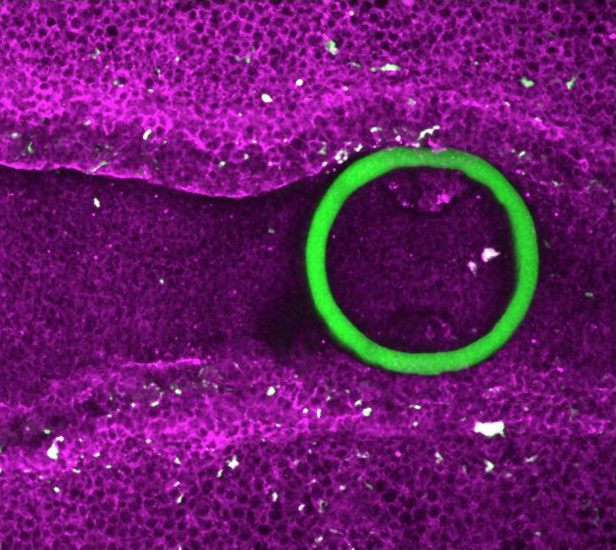The possibility of direct and non-invasive bioprinting 3D hydrogel structures across and inside preexisting living systems is substantially changing the paradigm of 3D bioprinting for biological and biomedical applications.
We developed a photosensitive biopolymer that can be photo-crosslinked in vitro or, after a simple injection inside the biological tissues, in vivo into a 3D object by using near infrared laser light without the need of any initiator and any byproducts formation. The crosslinking can be achieved by a multiphoton microscopy equipped with tightly-focused femtosecond pulsed infrared laser light, which allows a 3D imaging of anatomical sites, accurate positioning and orientation of the bioprinted structures and follow-up of engraftment structure, including functional analysis.
Fabrication of three-dimensional (3D) structures and functional tissues directly in live animals would enable minimally invasive surgical techniques for organ repair or reconstruction. Such intravital 3D bioprinting enables the: i) generation of complex composite hydrogel 3D structures; ii) production of 3D biochemical patterning within hydrogel structures and iii) modulation of mechanical properties over the time both in vitro in 3D culture systems (Nat comm) and in vivo inside tissues of live mice, including the dermis, skeletal muscle and brain (Nat biomed eng).
Mimicking in vivo microenvironment in terms of mechanical properties is important for obtaining a mature cell phenotype from differentiated pluripotent stem cells. Each tissue in the body is exposed to a microenvironment having a specific stiffness that is implicated in mechano-transduction signalling. We developed biomimetic hydrogels of tunable properties for promoting iPSC differentiation and as experimental means for validating hypothesised mechano-transduction signalling mechanisms. These hydrogels are based on synthetic or natural backbones (e.g. from decellularized tissues) and can be customised based on the specific application.

Intravital 3D bioprinting across epimysium
(Urciuolo et al., Nat Biomed Engin 2020)
In addition we are using this intravital 3D biopringing technology to create biomechanical sensors to be used in vivo for the dynamic measurement of the mechanical forces that are in place during the development of organisms.

